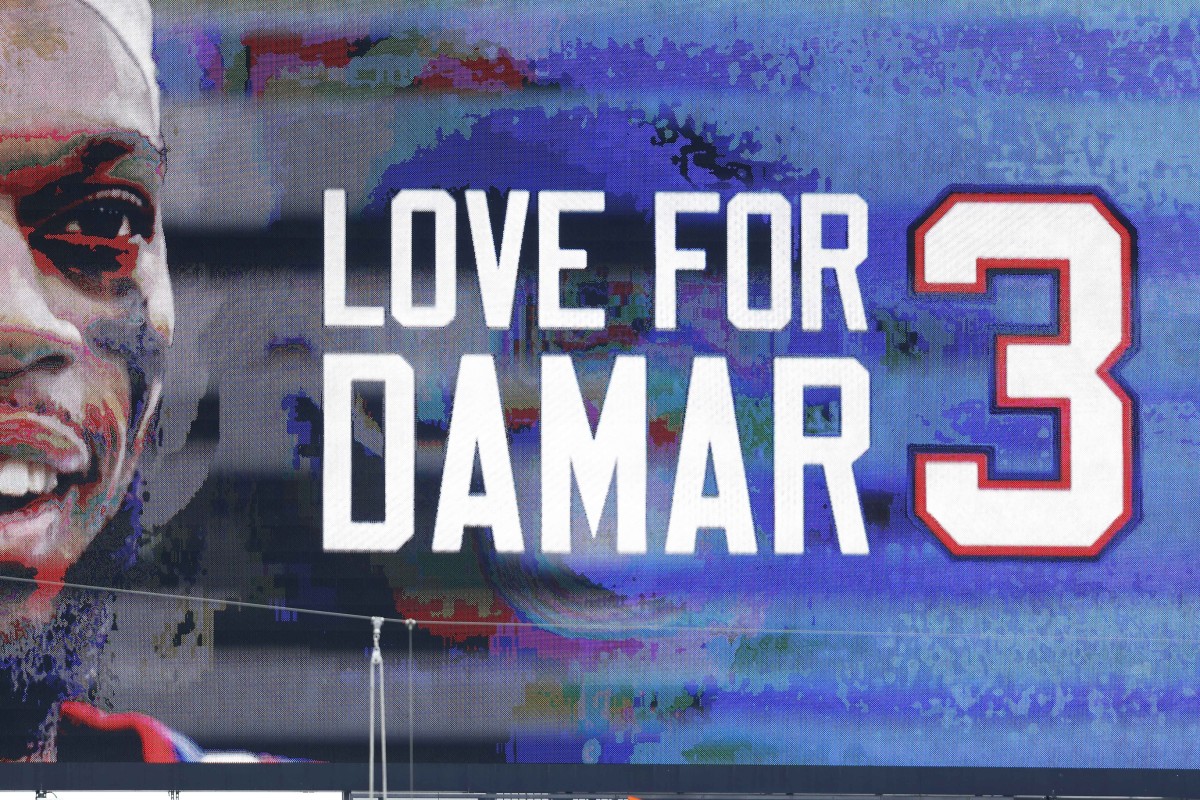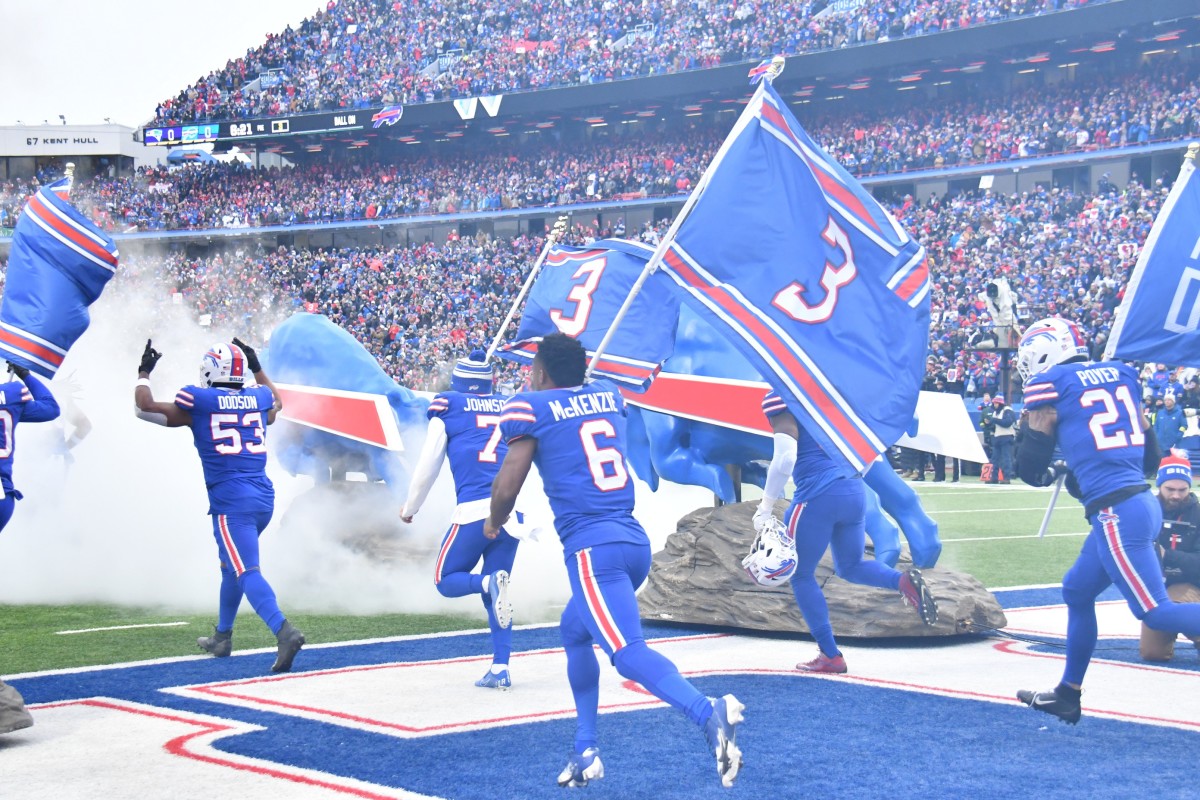Damar Hamlin’s Injury Reminds the World of Players’ Lives After Football
As the playoffs begin, the NFL calendar is in a state of flux. While 14 teams have kept their 2022 hopes alive, there are 18 who have already moved on to the business of building a team for the next season. By Monday afternoon, belongings were packed up, and most players had scattered to destinations anywhere outside of where they had been the past six months. The unfortunate reality of the NFL is that some of these players packing up will never return to those locker rooms. Coaches will be dismissed, leaving their families and the families of many on their staff to pivot the immediate future of housing, kids’ schooling, etc.
Even amidst this transient time, however, football seemed unimportant last week.

I’ve been around the NFL for most of my life. I was at RFK Stadium in Washington, D.C., with my father when Lawrence Taylor broke Joe Theismann’s leg. I’ve been both an agent and a team executive, where I’ve dealt with player trauma—with both limbs and concussions—on the practice field and playing field. I’ve had family members meet me in the training room, the X-ray room or even the hospital. But I’ve never seen anything like what happened on Monday Night Football between the Bengals and Bills.
The blow to Damar Hamlin in Cincinnati was neither uncommon nor violent. But as we now know, it hit the most vulnerable spot on his chest, at the most vulnerable point in his heartbeat cycle. As I was told by a cardiologist friend, someone could try to recreate this scenario a thousand times to spur a heart attack and not be able to do so. It was a tragic, one-in-a-million situation for Hamlin, but thankfully, he seems to be on a positive road to recovery.
A few thoughts on a “where were you when” moment in NFL history …
Searing image
What I continue to think about is the fact that (not to be overly dramatic), for a moment, Hamlin had left us. His heart stopped on that field, eventually resuscitated through CPR and an automated external defibrillator. It is nice to see well-deserved credit being given to the Bills’ training staff and first-responding medical professionals—the press conference hosted by doctors at the University of Cincinnati Medical Center confirmed that those efforts not only saved Hamlin’s life, but they also put the 24-year-old in the best position for success moving forward.
We say this all the time about concussions, but it also rings true beyond head injuries: Football is not a contact sport. It is a collision sport. The NFL has done an admirable job of making the game safer, but it cannot make the game safe. It is a conflict that we who consume and invest in the NFL deal with on a weekly basis: We understand the violence. We sometimes bemoan the violence. And, yet, we watch (and even crave) the violence. Hamlin’s life will never be the same because of football, just as many other players’ lives are not the same after football. Will that pull some players and viewers away from the game? The truth is, it’s not likely. The NFL appears too big to fail.
Delay necessary
As to it taking a while for the NFL to officially suspend the game, the knee-jerk criticism of the league was unfair. I remember being at the Hall of Fame game in Canton, Ohio, in a continuous thunderstorm, with frequent batches of lightning. The game was meaningless, and the delays meant it was already approaching midnight, but it still took a long time for the NFL to deal with all the appropriate parties to finally call the game over—even though both teams wanted to end it. Calling the game in Cincinnati was not as easy as talking to the two coaching staffs. It required a lot of coordination before announcing a suspension, and the NFL had to assess a lot of moving parts, not the least of which was releasing 60,000 fans out of Paycor Stadium at 9 p.m. ET instead of the expected 11:30 p.m. As to the report that players were initially told to warm up in five minutes, ESPN has not answered that one sufficiently beyond Joe Buck’s statement that the information came from a league contact. That is on them.
Bills counseling

I have used the submarine analogy before when talking about the life of NFL coaches and players: They embark in late July and come out in January. There is bonding, fighting and brotherhood. The Bills were family to Hamlin and vice versa. The players and coaching staff witnessed a horrific trauma on the field that will be seared into their memory for likely a lifetime. All the positivity right now is great—and is helping them through it—but they will think about this in a month, in six months, in a year, forever. Long-term counseling and support will be vital for those players and staff.
The Packers were one of the first teams to offer counseling to players and their families, back in the 2000s when discussions around mental health were not mainstream. At the time, a local psychologist came to the facility by appointment only. Now, all teams have staff serving the mental-health-related needs of those with their franchise.
Split contract, nonvested player
Hamlin is a sixth-round 2021 draft pick in his second year who has a standard split in his contract, meaning he receives a lower salary (one far below the minimum) if placed on injured reserve. There is a report that his contract will be adjusted to have him receive his full contracted amount, not a split one, despite his injury. That will be interesting, as it would first require a renegotiation, and the CBA does not allow renegotiations until players have played three years in the league.
Troy Vincent, who is NFL executive vice president for football operations, has said the league will be “taking care” of Hamlin despite the safety not being vested (three credited NFL seasons) and eligible for pension benefits. Although that is good public relations, “taking care” of Hamlin can mean a lot of things, some of which may require long-term care. This points to a larger issue of inequity in the league: Owners have consistently wrangled economic gains from players over the years, and yet there is still a lack of health and retirement benefits for the large swath of NFL players who never become vested.
There is goodness among us
I often hear about Twitter being a place of outrage and negativity. First, a pro tip: If that is true for you, you need to follow better people. More important, the Hamlin situation showed how positive a forum Twitter can be. We all wanted to do something, and Twitter gave us a way. It brought out the inherent goodness that is in so many people, in a way no other platform can, and now Hamlin’s charity (The Chasing M’s Foundation Charitable Fund) has now risen to more than $8.6 million in funding.
Like so many of you, I hope and pray Hamlin will continue on this positive path. But as someone who watched my father go through many postcardiac-arrest complications, I know there are a lot of hurdles to overcome. Yes, Hamlin is young and in excellent shape, which gives him a great chance for success. As of this writing, he is still in the hospital after being transferred to Buffalo.
What a scary moment for the sport, and what an emotional moment that followed just six days later in Buffalo. Hamlin will move and inspire us through the playoffs, but the challenge—as with anything—is sustaining the energy and support for him. In this fast-moving world of one-day news cycles, let’s all try to be there for the long term on this.
